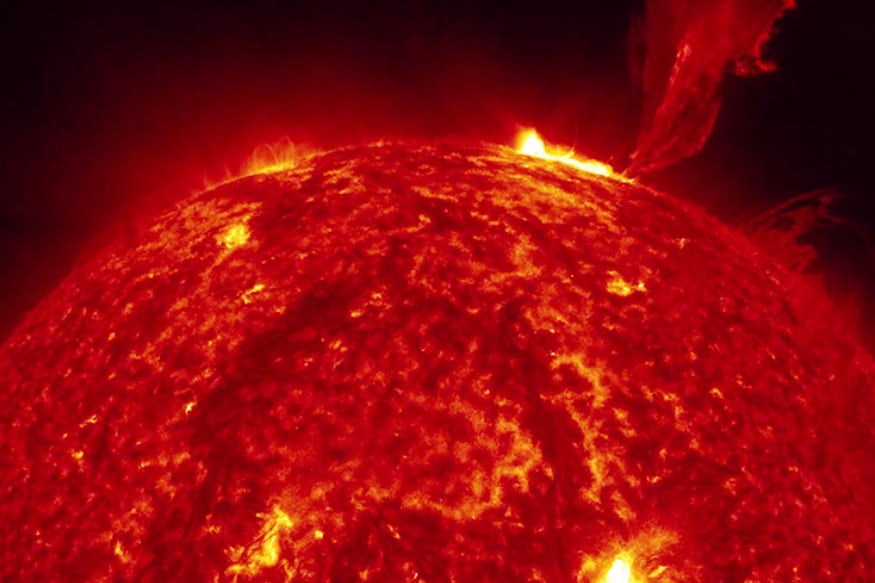 Superflares erupted from the Sun could disrupt electronics across the Earth, causing widespread black outs and shorting out communication satellites in orbit, scientists warn.
Superflares erupted from the Sun could disrupt electronics across the Earth, causing widespread black outs and shorting out communication satellites in orbit, scientists warn.
Astronomers probing the edges of the Milky Way have in recent years observed superflares — huge bursts of energy from stars that can be seen from hundreds of light years away.
Until recently, researchers assumed that such explosions occurred mostly on stars that, unlike Earth’s, were young and active.
Scientists from University of Colorado (CU) Boulder in the US have found that superflares can occur on older, quieter stars like our own — albeit more rarely, or about once every few thousand years.
If a superflare erupted from the sun, the Earth would likely sit in the path of a wave of high-energy radiation, researchers said.
Such a blast could disrupt electronics across the globe, causing widespread black outs and shorting out communication satellites in orbit.
“Our study shows that superflares are rare events. But there is some possibility that we could experience such an event in the next 100 years or so,” said Yuta Notsu, a researcher in CU Boulder.
Scientists first discovered this phenomenon from an unlikely source: the Kepler Space Telescope. The NASA spacecraft, launched in 2009, seeks out planets circling stars far from Earth.
However, it also found something odd about those stars themselves. In rare events, the light from distant stars seemed to get suddenly, and momentarily, brighter.
Researchers dubbed those humongous bursts of energy “superflares.”
Notsu explained that normal-sized flares are common on the Sun. However, what the Kepler data was showing seemed to be much bigger, on the order of hundreds to thousands of times more powerful than the largest flare ever recorded with modern instruments on Earth.
“When our sun was young, it was very active because it rotated very fast and probably generated more powerful flares,” said Notsu, also of the National Solar Observatory in Boulder.
“But we didn’t know if such large flares occur on the modern sun with very low frequency,” he said.
To find out, researchers turned to data from the European Space Agency’s Gaia spacecraft and from the Apache Point Observatory in New Mexico.
Over a series of studies, the group used those instruments to narrow down a list of superflares that had come from 43 stars that resembled our sun. The researchers then subjected those rare events to a rigorous statistical analysis.
Based on the team’s calculations, younger stars tend to produce the most superflares. However, older stars like the Sun — which is 4.6 billion years old — also produce them occassionally.
“Young stars have superflares once every week or so. For the sun, it’s once every few thousand years on average,” Notsu said.
[“source=news18”]
| M | T | W | T | F | S | S |
|---|---|---|---|---|---|---|
| 1 | 2 | 3 | 4 | 5 | 6 | |
| 7 | 8 | 9 | 10 | 11 | 12 | 13 |
| 14 | 15 | 16 | 17 | 18 | 19 | 20 |
| 21 | 22 | 23 | 24 | 25 | 26 | 27 |
| 28 | 29 | 30 | 31 | |||



























